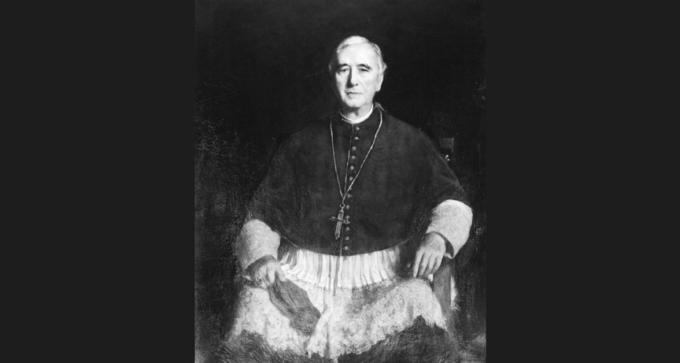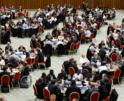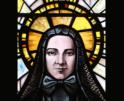
Culture

The new Bishop Williams presided over a period of unprecedented growth for the Diocese of Boston. In many ways, the modern Archdiocese of Boston took shape during his episcopate.
On April 27, 1822 -- 200 years ago last month -- John Joseph Williams, first Archbishop of Boston, was born.
Archbishop Williams was the second child of Irish immigrants Michael Williams and Ann Egan. Baptized at the cathedral the day after his birth, Archbishop Williams was tied to the Church in Boston from the beginning. In 1827, he became one of the first pupils at the "Catholic Academy" established by Bishop Fenwick for the education of Catholic children. He remained at the school -- which was taught by candidates for the priesthood who were, in turn, taught by Bishop Fenwick -- for six years, before being sent for higher study at Saint-Sulpice College in Montreal. Later, he would recall, "Since my birth I have never left the home which we held in the parish of the Holy Cross, for I consider the time that I was in college and the seminary only a term when I was away ... while the home was the same in the parish."
At Saint-Sulpice, he distinguished himself by his command of French, athletic prowess, and musical ability. He made a lifelong friend in an older New England student, John B. Fitzpatrick, who would later become his predecessor as Bishop of Boston.
Having discerned a call to the priesthood at an early age, Archbishop Williams went on to attend Saint-Sulpice Seminary in Paris, where many of the Boston Diocese's most promising candidates were traditionally sent for theological study. His instructors reported to Bishop Fenwick, "We are not dissatisfied with Mr. Williams ... he has received well the counsels that have been given him, and has promised to profit by them."
While in Paris, Archbishop Williams studied with men who would become some of the most important priests in the Boston Diocese, including Father Patrick Lyndon, who would serve as vicar general from 1866-1879, and Father George Haskins, who would found the House of the Angel Guardian, an orphanage for boys, in 1851. After four years of study, he was ordained by Archbishop Denis-Auguste Affre of Paris on May 17, 1845.
Returning to Boston on Oct. 10, 1845, the newly ordained Father Williams was assigned to the Chapel of the Holy Cross, the basement church of the cathedral, used mainly for the instruction of children. He remained in this post for 10 years, overseeing Sunday school and catechesis for the Catholic children of Boston, a setting not unlike the one that had formed him in his youth. From 1851 to 1852, he was also assigned to the Chapel of the Guardian Angels, the precursor to St. Joseph Church in the West End of Boston, and the Chapel of the Holy Family, the precursor to St. James in what is now Boston's Chinatown neighborhood. In 1856, he was promoted to rector of the Cathedral; a year later, he became pastor of St. James Church and vicar general of the diocese.
From the time of his ordination, Archbishop Williams enjoyed the confidence of the bishops of Boston to a degree that was exceptional for a young priest. He had known Bishop Fenwick since childhood and seemed to view him as a second father, his own father having died when he was eight years old. He was present at Bishop Fenwick's death bed, was the trustee of his will, and served as the master of ceremonies at his funeral in 1846. When Bishop Fitzpatrick succeeded Bishop Fenwick, he, too, put great trust in Archbishop Williams, assigning him to the most important administrative posts in the diocese.
As Bishop Fitzpatrick's health began to fail in the early 1860s, Archbishop Williams was appointed diocesan administrator and assumed responsibility for the day-to-day operations of the diocese. In January of 1866, he was appointed coadjutor bishop, and upon the death of Bishop Fitzpatrick on Feb. 13 of that year, he automatically succeeded him as the fourth Bishop of Boston. On the occasion, The Pilot wrote, "The appointment, we are sure, will not only be received by the Clergy of the Diocese with great favor, but by the laity also. Father Williams is well known to the Catholics of Boston . . . As a bosom friend of Bishop Fitzpatrick (he) is worthy to be his successor."
The new Bishop Williams presided over a period of unprecedented growth for the Diocese of Boston. In many ways, the modern Archdiocese of Boston took shape during his episcopate. After the Civil War, immigrants, predominantly Catholics, arrived in New England in droves, creating the need for more churches, institutions, and clergy to serve them. According to Sadlier's Catholic Almanac, 1866, there were 109 churches and 119 priests in the diocese; by Archbishop Williams's death in 1907, there were 244 churches and 488 priests.
To help serve his ever-growing population, Archbishop Williams invited new religious orders to the diocese. The Oblates of Mary arrived in 1868, the Redemptorists in 1869, the Franciscans in 1873, and the Brothers of Charity in 1874. The Grey Nuns of Montreal came in 1866, followed by the Sisters of the Third Order Regular of St. Francis in 1868, the Sisters of the Good Shepherd in 1869, and the Sisters of St. Joseph in 1873 -- and this list is by no means exhaustive.
With the congregations of women and men religious came new schools, hospitals, orphanages, and charitable organizations. The House of the Good Shepherd was established in 1867; a larger Home for Destitute Catholic Children was dedicated in 1871. St. Elizabeth's Hospital in Boston was founded in 1868, and the Home for the Aged Poor in Roxbury opened in 1872. The diocesan seminary, St. John's, opened in Brighton in 1884. A grand new cathedral was completed in 1875, the same year that Pope Pius IX raised Boston to a metropolitan archdiocese, making Bishop Williams an archbishop.
In 1906, the year before he died, Archbishop Williams spoke at the consecration of Louis Walsh as Bishop of Portland, Maine. He looked back on his long life and recalled, "I was living when there was not a priest in Maine, and none in all New England except one in Boston. I speak of this to show you the great advancement our Church has made in New England within this period."
VIOLET HURST IS AN ARCHIVIST FOR THE ARCHDIOCESE OF BOSTON.
Recent articles in the Culture & Events section
-
Scripture Reflection for April 14, 2024, Third Sunday of EasterDeacon Greg Kandra
-
St. Helena's House is established in the South EndThomas Lester
-
Is this synodality?Russell Shaw
-
Poking the hornet's nest of IVFFather Tadeusz Pacholczyk
-
A eucharistic word: MissionMichael R. Heinlein


















